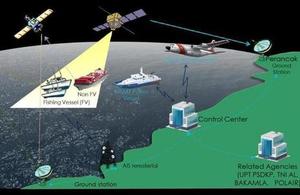Inmarsat (Indonesia) Sustainable fishing
Smart satellite technology for inclusive & sustainable fishing practices in Indonesia

Credit: Inmarsat
Project Title
Designing and implementing innovative solutions for smart satellite technology to promote inclusive and sustainable fishing practices in Indonesia
Target Country
Indonesia
Project Lead
Inmarsat
Project consortium
Inmarsat, Satellite Application Catapult, Poseidon Aquatic Resource Management Ltd, Hatfield Consultants, Sisfo, Marine Change
International partners
Indonesian Ministry of Maritime Affairs and Fisheries (MMAF)
Programme summary
The Indonesian fishing sector is a critical driver of the economy and society, supporting 7 million fishers. Fishing not only supports millions of households but is also part of a valuable global export business. However, environmentally unsustainable fishing, including illegal and unreported fishing, harms the entire value chain, as well as introducing safety and security challenges, and costs the Indonesian government up to $20 billion a year.
By expanding the use of Vessel Monitoring Systems (VMS) this programme will incentivise fishers to use VMS actively by:
- Designing additional services to be carried by VMS – safety and comms
- Designing new operational protocols for policing and fisheries management
- Reducing illegal fishing to conserve fishing stocks
In addition, by working closely with the MMAF to create the right processes to interpret and react to the data generated, it will:
- Strengthen the surveillance capabilities of the Ministry
- Improve the policing of illegal fishing and of conservation areas
- Move the industry onto a more sustainable and more profitable basis
- Provide valuable industry information on catches and sourcing to improve fishery management
Objectives
The Programme aims and objectives are to:
- Enhance the safety, productivity and food security of Indonesian fishers and their communities by expanding the adoption of Vessel Monitoring Systems (VMS)
- Improve the effectiveness of monitoring and enforcement efforts by regulators through technology and process improvements, resulting in a reduction of illegal fishing activities and greater territorial sovereignty